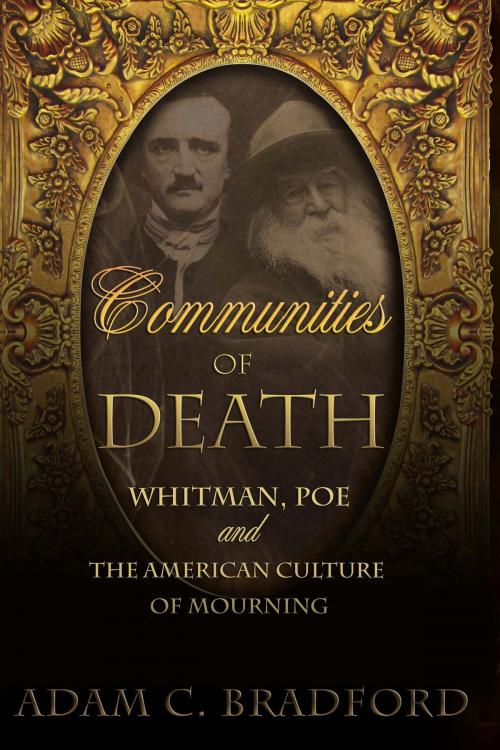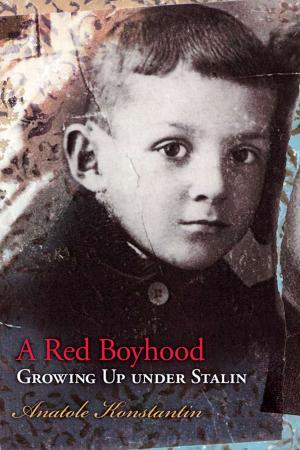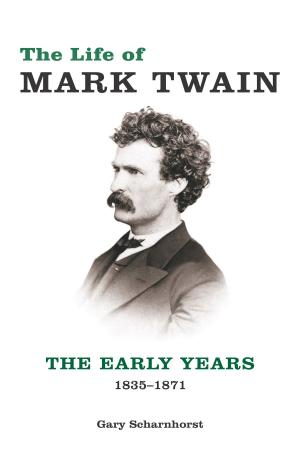Communities of Death
Whitman, Poe, and the American Culture of Mourning
Fiction & Literature, Literary Theory & Criticism, American| Author: | Adam C. Bradford | ISBN: | 9780826273161 |
| Publisher: | University of Missouri Press | Publication: | December 18, 2014 |
| Imprint: | University of Missouri | Language: | English |
| Author: | Adam C. Bradford |
| ISBN: | 9780826273161 |
| Publisher: | University of Missouri Press |
| Publication: | December 18, 2014 |
| Imprint: | University of Missouri |
| Language: | English |
To 21st century readers, 19th century depictions of death look macabre if not maudlin—the mourning portraits and quilts, the postmortem daguerreotypes, and the memorial jewelry now hopelessly, if not morbidly, distressing. Yet this sentimental culture of mourning and memorializing provided opportunities to the bereaved to assert deeply held beliefs, forge social connections, and advocate for social and political change. This culture also permeated the literature of the day, especially the works of Edgar Allan Poe and Walt Whitman. In Communities of Death*,* Adam C. Bradford explores the ways in which the ideas, rituals, and practices of mourning were central to the work of both authors.
While both Poe and Whitman were heavily influenced by the mourning culture of their time, their use of it differed. Poe focused on the tendency of mourners to cling to anything that could remind them of their lost loved ones; Whitman focused not on the mourner but on the soul’s immortality, positing an inevitable reunion. Yet Whitman repeatedly testified that Poe’s Gothic and macabre literature played a central role in spurring him to produce the transcendent Leaves of Grass.
By unveiling a heretofore marginalized literary relationship between Poe and Whitman, Bradford rewrites our understanding of these authors and suggests a more intimate relationship among sentimentalism, romanticism, and transcendentalism than has previously been recognized. Bradford’s insights into the culture and lives of Poe and Whitman will change readers’ understanding of both literary icons.
To 21st century readers, 19th century depictions of death look macabre if not maudlin—the mourning portraits and quilts, the postmortem daguerreotypes, and the memorial jewelry now hopelessly, if not morbidly, distressing. Yet this sentimental culture of mourning and memorializing provided opportunities to the bereaved to assert deeply held beliefs, forge social connections, and advocate for social and political change. This culture also permeated the literature of the day, especially the works of Edgar Allan Poe and Walt Whitman. In Communities of Death*,* Adam C. Bradford explores the ways in which the ideas, rituals, and practices of mourning were central to the work of both authors.
While both Poe and Whitman were heavily influenced by the mourning culture of their time, their use of it differed. Poe focused on the tendency of mourners to cling to anything that could remind them of their lost loved ones; Whitman focused not on the mourner but on the soul’s immortality, positing an inevitable reunion. Yet Whitman repeatedly testified that Poe’s Gothic and macabre literature played a central role in spurring him to produce the transcendent Leaves of Grass.
By unveiling a heretofore marginalized literary relationship between Poe and Whitman, Bradford rewrites our understanding of these authors and suggests a more intimate relationship among sentimentalism, romanticism, and transcendentalism than has previously been recognized. Bradford’s insights into the culture and lives of Poe and Whitman will change readers’ understanding of both literary icons.















